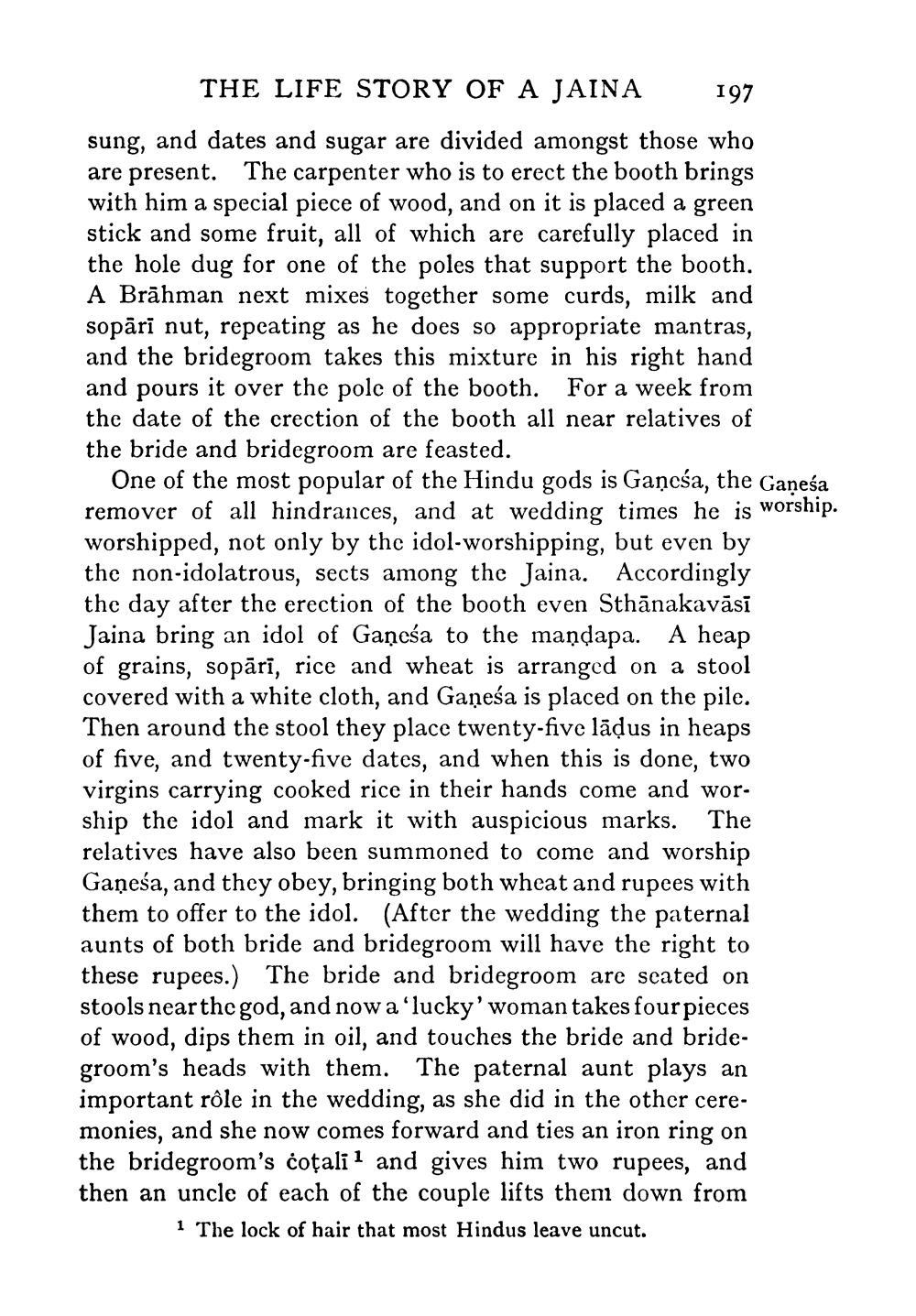________________
THE LIFE STORY OF A JAINA
197
sung, and dates and sugar are divided amongst those who are present. The carpenter who is to erect the booth brings with him a special piece of wood, and on it is placed a green stick and some fruit, all of which are carefully placed in the hole dug for one of the poles that support the booth. A Brahman next mixes together some curds, milk and sopārī nut, repeating as he does so appropriate mantras, and the bridegroom takes this mixture in his right hand and pours it over the pole of the booth. For a week from the date of the erection of the booth all near relatives of the bride and bridegroom are feasted.
One of the most popular of the Hindu gods is Gancśa, the Gaṇeśa remover of all hindrances, and at wedding times he is worship. worshipped, not only by the idol-worshipping, but even by the non-idolatrous, sects among the Jaina. Accordingly the day after the erection of the booth even Sthānakavāsī Jaina bring an idol of Gaṇeśa to the mandapa. A heap of grains, sopārī, rice and wheat is arranged on a stool covered with a white cloth, and Gaṇeśa is placed on the pile. Then around the stool they place twenty-five laḍus in heaps of five, and twenty-five dates, and when this is done, two virgins carrying cooked rice in their hands come and worship the idol and mark it with auspicious marks. The relatives have also been summoned to come and worship Gaṇeśa, and they obey, bringing both wheat and rupees with them to offer to the idol. (After the wedding the paternal aunts of both bride and bridegroom will have the right to these rupees.) The bride and bridegroom are seated on stools near the god, and now a 'lucky' woman takes four pieces of wood, dips them in oil, and touches the bride and bridegroom's heads with them. The paternal aunt plays an important rôle in the wedding, as she did in the other ceremonies, and she now comes forward and ties an iron ring on the bridegroom's coțali1 and gives him two rupees, and then an uncle of each of the couple lifts them down from
1 The lock of hair that most Hindus leave uncut.




